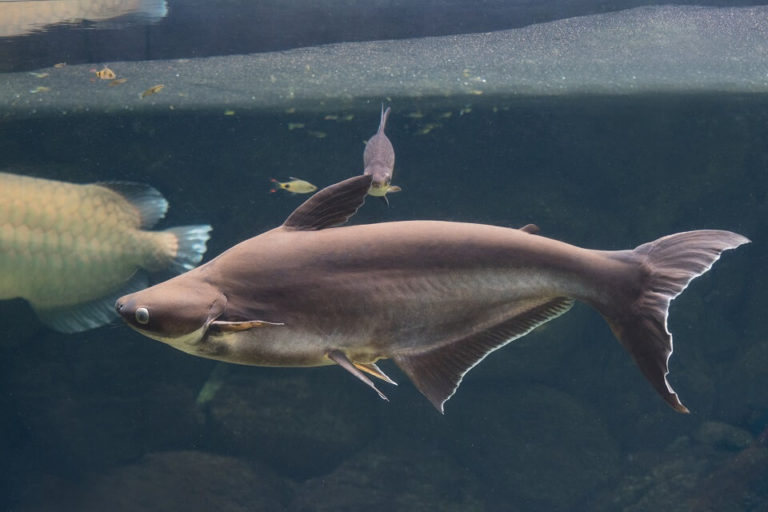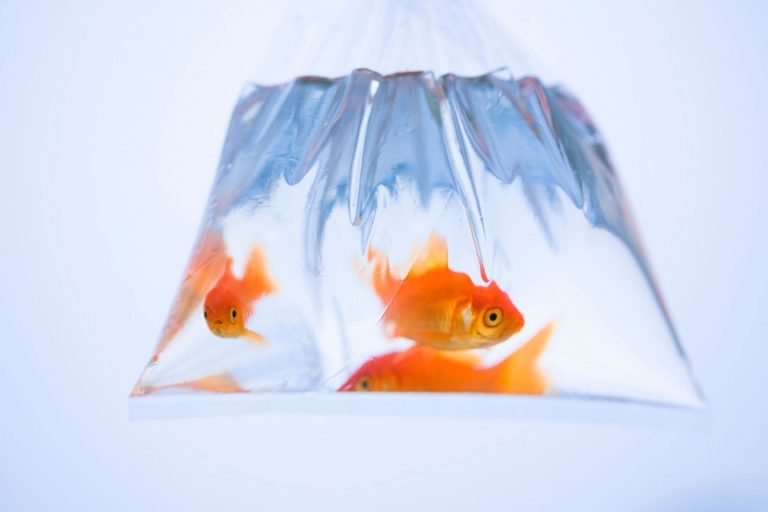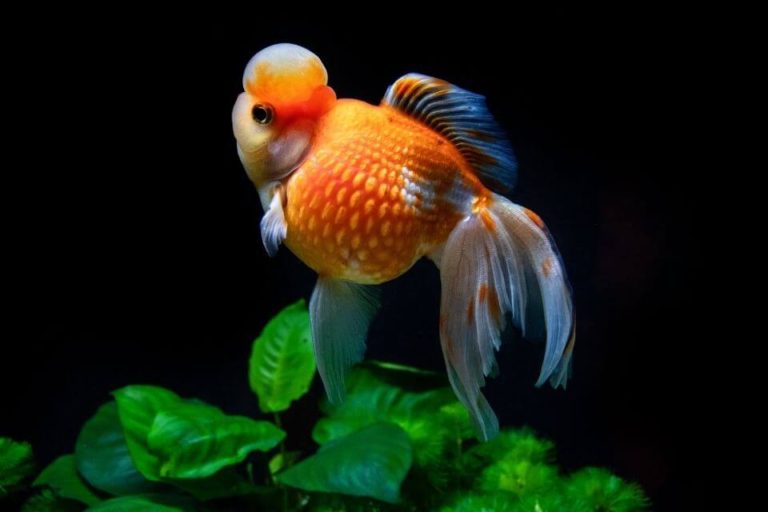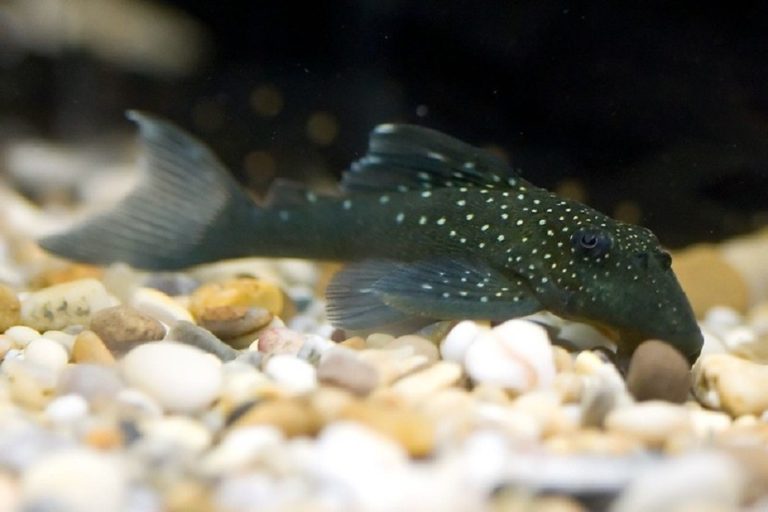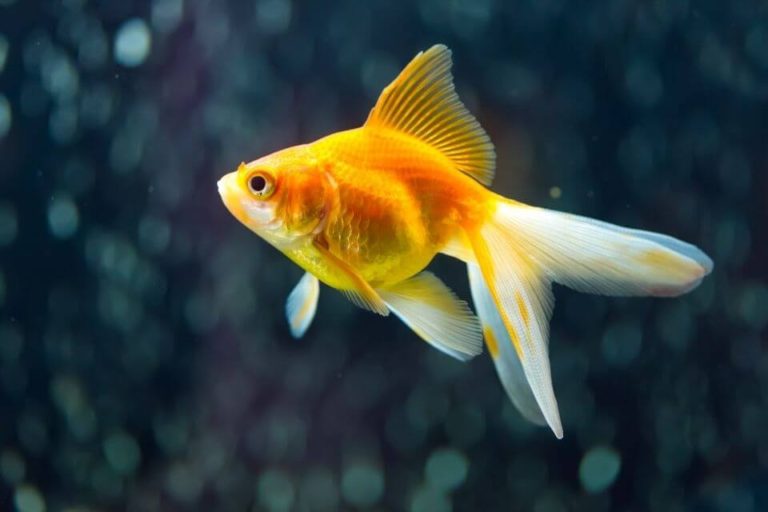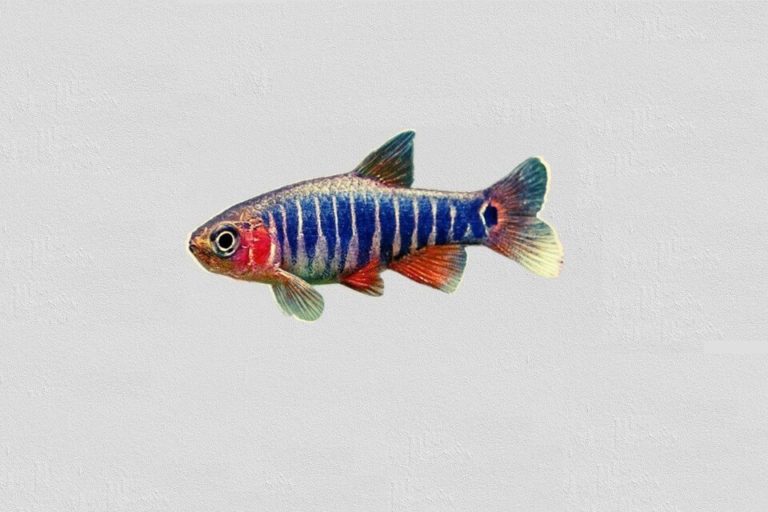Most Fascinating Freshwater Crabs That You Must Have In Your Aquarium
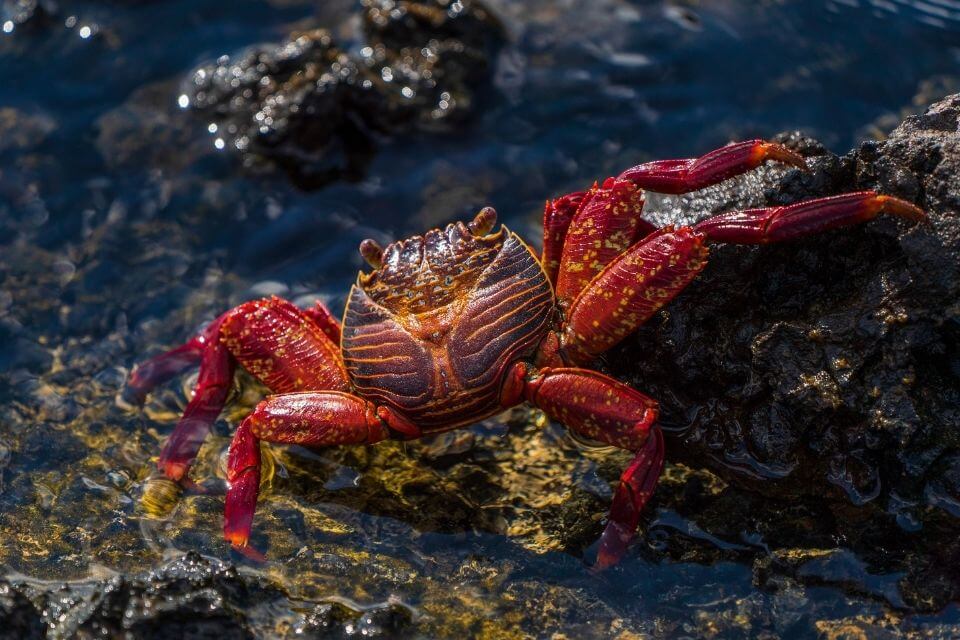
Can crabs live in freshwater? Many people do not realize that there are Freshwater Crabs exist and can keep them as aquarium pets.
They are small and fascinating creatures that have mastered the art of disappearance. Most of the time, you will find them digging into any hole found in the aquarium or scavenging around the tank for whatever goodies they find floating.
They are usually overlooked by many aquarists, as many think of keeping different aquarium pet species. Many don’t know that they can keep Freshwater Crabs as pets. Also, they are exceptional to rear, as they have a ton of personality and are fun to watch. More so, they add a distinct and unique feel to your tank setup.
Since many are not familiar with keeping Freshwater Crabs as aquarium pets, we have compiled this detailed guide with a list of Crabs that can be kept as a pet and how to care for them.
Overview
These crab species are omnivorous; thus, they can feed on any food. There are about 1300 species of Freshwater Crabs in the world. They are categorized into 8 families, and they include:
- Potamonautidae,
- Gecarcinucidae,
- Parathelphusida,
- Potamidae,
- Deckeniidae,
- Trichodactylidae,
- Gecarcinucidae,
- Platythelphusidae
A lot is yet to be discovered about these stunning creatures. Freshwater Crabs are primarily found in tropical and subtropical regions. And since they are confined to specific regions and ecosystems, scientists term them as narrow endemics, and many of them are on the list of endangered species worldwide.
Origin, Distribution, and Availability
Freshwater Crabs are originally found in the tropical and sub-tropical regions of the world. As mentioned above, there are about 1300 species identified, and they are divided into 8 families. Each family is found in a different part of the world.
For instance, Trichodactylidae and Pseudothelphusidae species are found in Central America and South America, Potamidae species are found in the Mediterranean Basin and Asia.
Potamonautidae species are found in Africa, Deckenidae species are found in East Africa and Seychelles, and Platythelphusidae species are found in East Africa. Gercarcinucoidae and Parathelphusidae species are also available in Asia.
Scientific studies suggest that 1/6 0f Freshwater Crabs are in danger of becoming extinct because of habitat destruction, poor dispersal rates, and that, unlike other marine species, they give birth to fewer offspring.
Because some species are on the list of endangered species out in the wild, they are bred in private and sold to aquarists worldwide. You can find them in local aquarium pet stores for Freshwater Crabs for sale at reasonable prices. Also, it is not hard to find them from reliable online aquarium retailers in your country.
Let us look at some of the popular crab species that can be kept as pets; they include:
1 . Freshwater Pom Pom Crab
| Quick Facts: | |
|---|---|
| Common Names : | Pom Pom Crab, Boxer Crab |
| Origin : | Hawaiian Islands |
| Family : | Xanthidae |
| Scientific Name : | Lybia edmondsoni |
| Care Level : | Easy |
| Temperament : | Peaceful |
| Diet : | Omnivores |
| Size (average) : | Up to 1 inche |
| Lifespan : | Up to 1 year |
| Minimum Tank Size: | 5 gallons |
| Tank Environment : | Freshwater |
| Temperature : | 72 – 82 °F (22 – 27 °C) |
| Water Hardness : | 5 - 20 dKH |
| Water pH Level : | 6.0 - 7.5 |
Freshwater Pom Pom Crabs are somewhat rare and mainly bred in captivity. They are easy to look after, easy-going, and have a peaceful nature. They are also referred to as Boxer Crabs, which might seem counteractive to their friendly nature.
Freshwater Pom Pom crabs are fully aquatic, so you don’t need to bother providing them with land portions in your tank. However, make sure that the water levels are low to prevent them from escaping.
They are tiny and have a delicate skeleton with stinging anemones in their claws. They also have hairs growing on their claws, thus the name Pom Pom. Food particles collect in the follicles, making it easy for them to get detritus and algae.
Juvenile Pom Pom crabs are less than an inch in width and grow up to 1.7 inches including legs. They must be kept in water temperatures ranging between 68 and 78 degrees Fahrenheit, and the pH should be maintained between 6.2 to 7.2. Water hardness should be between 8 to 12 dKH.
The perfect Pom Pom Crab tank mates would be:
- Ghost Shrimp
- Cherry Shrimp
- Amano Shrimp
- Bamboo Shrimp
- Pearl Danio
- Neon Tetra
- Dwarf Gourami
- Mollies
- Other peaceful fish species
2. Freshwater Fiddler Crab

Fiddler Crab is a pretty small and non-aggressive freshwater crab species. They mostly prefer brackish water. It is easy to point out as they have asymmetrical claws, and the males have one claw that is brightly colored and larger than the other claw, while the females have equal-sized claws.
They are semi-aquatic and Fiddler Crab care is very easy, thus perfect for beginners. Therefore ensure that your tank has brackish water with plenty of surfaces to climb, things to pray with, and land portions.
Fiddler Crab grows up to 2 inches and is mostly seen traveling in pairs, so buy at least two. They can only have a long healthy life if you provide them with optimal care. Usually, they can live between 2 to 3 years in captivity
The water temperature should range between 75 to 86 degrees Fahrenheit with a minimum tank size of 10 gallons of fresh water. Water hardness required between 12 to 30 dKH with the pH ranging between 8.0 to 8.5.
Perfect Fiddler Crab tank mates would be:
- Guppy Fish
- Mollies
- Swordtail Fish
- Bumblebee Gobies
- Platy fish
3. Vampire Crab

These crabs are a beautiful addition to any aquarium. Vampire Crabs have a deep purple coloring with white spots on their backs and pinkish claws. They are hard enough to survive in a wide range of water conditions.
Vampire Crab’s quirky appearance is brought out by their round head and bright yellow eyes. Mature crabs are about 2 inches and Vampire Crab lifespan up to 2 years in captivity.
Vampire Crabs love sitting on rocks or logs. They are sociable and non-territorial; thus, you can place them together with fellow Vampire Crabs. They love to burrow through the sand.
Using sandy substrate and Java Moss aquarium plants in the tank is the ideal solution. Sometimes they can be aggressive, so it’s best to avoid placing other tankmates apart from fellow Vampire Crabs in this tank.
They are partially aquatic as they spend half of their time in water and half on land. They love high humidity, and the water temperature must be maintained between 70 and 82 degrees.
It would be perfect if you provide them a minimum of 10 gallons tank with a water hardness of 10 dKH. Water acidity level between 7.5 to 8.0 would work best for these Vampire Crabs
4. Panther Crab

They are sometimes referred to as Leopard Crab because of their leopard prints. They are a peaceful species irrespective of their name and can be kept with certain types of fish, such as Mollies, Bettas, Tetras, Guppies, and Catfish.
The tank must be large enough to accommodate Panther Crabs and tankmates and leave some space for preparing a sandy beach for the crabs. Although they are not aggressive, do not house them with small-sized fish and always keep them well fed to avoid turning their tankmates into food.
Keep a minimum of four Panther Crabs (male and female) in a tank.
It is easy to differentiate between male and female, thus easy to mate. The females have a salmon-colored spot of the underside, while the males have white or ivory-colored underbellies and some unique patterns shaped like butterflies.
5. Thai Devil Crab
Thai Devil Crabs are beautiful freshwater crab species with different hues. The purple coloring is the most common, which is contrasted by the bright red color on their head and claws. Like most crabs, they need both water and land surface to survive. They are easy to care for.
Thai Devil Crabs are gentle and non-aggressive, but are aggressive towards small-sized fish, especially when they feel threatened. Therefore, please provide them with an enormous tank.
They grow up to 3 inches, and like most crabs, Thai Devils are scavengers. Please provide them with many hiding places such as sandy substrate, logs, artificial caves, and plants.
Thai Devils love feeding on algae and detritus. You can also provide them with other plant and protein-based foods, such as brine shrimp, pellets, zucchini, and lettuce.
6. Red Claw Crab

Red Claw Crabs are popular in the aquarium community because they are easy to look after and are readily available. They have red claws, thus their name. They are shy and skittish, but they come out of their shell to explore their surroundings once they are comfortable.
Red Claw Crabs can live up to five years and grow up to 4 inches under optimal conditions. In their natural habitat, they prefer brackish water; however, many aquarists and pet stores keep them in freshwater. This affects their lifespans. If you want your Red Claw Crab to outlive their lifespan, imitate their native habitat.
Red Claw Crabs are notorious climbers, so cover your tank and ensure that it is escape-proof. Ensure that the water temperature hovers between 70 and 80 degrees.
Typical Behavior
Freshwater Crabs are highly active, and most of the time, you find them digging the ground and collecting everything on the surface, thus the term scavengers. They are omnivorous, and some species can be termed, predators.
Most of their time is spent exploring, digging, and climbing, so provide them with plants and other decorations such as logs, driftwoods, and caves to keep them busy.
Freshwater water crabs are masters of disappearance, as they can fit in the tiniest hole possible; ensure that you provide a cover for your aquarium and that it is escape-proof. Most of the species are not aggressive, but their behavior varies across species as some are more territorial than others, and you may find some attacking other crabs.
Characteristics
There are many types of Freshwater Crabs, and their characteristics vary across the species. You find that different crabs have varying appearances, colors, and patterns, from red, purple to leopard print.
You also find that their claws are different. What is common in all the crabs is their beautiful and stunning appearance that is fun to watch.
Freshwater Crabs Habitat, Tank Conditions, and Care
Some people find crabs intimidating, but they might even be easy to look after than many aquarium fish types. So read on and discover why you need to do to keep Freshwater Crabs as a pet.
– Habitat
The most important aspect of caring for your carbs is the habitat setup. You must imitate their native habitat up to the last detail to ensure that they have a long, healthy life. Each Crab species has specific requirements, but you must first find a suitable tank for your crabs.
Again it is essential that you replicate their wild environment when setting up an aquarium.
– Tank Size
Freshwater Crabs aquarium size is determined by the size of your crabs and the possibility of keeping other tankmates. The minimum tank size should be 5 to 10 gallons. However, the bigger the tank, the better. This is because it provides your crabs with enough space to scavenge and ensures that they are not cramped.
Since most freshwater Crabs are not 100% aquatic, ensure that your tank has a good ratio of land to water. Most prefer for it to have 2 parts water and one part land. The easiest way to create the land portion is by pilling up sand higher in one area to create a fun little beach for your crabs. Alternatively, you can buy a ready-made tank.
Then place your tank in a warm area away from direct sunlight as it can cause harm to your crabs. Also, ensure that you provide your crabs with filtered water since tap water contains chlorine, which is harmful to crabs.
– Tank Setup
- The best is to get a ready-made tank because setting up your own tank can be tricky.
- But if the funds are tight, you can get a 20 gallons tank and put sand at the bottom. Then create a slope covering 2/3 of your tanks so that your crabs can get a place to stay above water.
- Fill your tank with freshwater or brackish water, depending on the type of water your crabs thrive in.
- Add decorations, such as fake and live plants, logs, and caves.
- Outfit your tank with a robust filtration system to keep the tank clean
- Outfit your tank with a heater since Freshwater Crabs love warm temperatures
- Then fill your tank with water and leave it running for a week or two.
- Keep testing the water and the filtration system to ensure that everything works smoothly. Once you have, ensure that the tank is in proper working order.
- Introduce your crabs in the tank
- Always remove food remnants from the tank and change 30% of the water after every two weeks.
– Water parameters
Crabs love warm temperatures hovering between 72 and 82 degrees Fahrenheit. You can outfit your aquarium with a heater to maintain the water temperature. Each species has its requirement for salinity and water hardness, so ensure that you ask for the specifications before purchasing.
– Suitable plants
Crabs tend to uproot and cut the root of live plants; ensuring they have a robust root system is paramount. Some aquarium plants you can try include Java Moss, Anubias, and Java Fern. Alternatively, you can use artificial plastic plants.
– Care and Maintenance
After introducing your Freshwater Crabs in the tank, you must always provide optimal care and maintenance to ensure that they live a long and healthy life.
- You must make sure that your crabs have enough space to play and roam. And also provide enough land space.
- Clean the water regularly and remove 30% of the water twice every month.
- Regularly check the water temperature, pH, and salinity and adjust if there is a disparity.
- Feed them a balanced diet, don’t overfeed them, and always remove excess food particles to avoid a bad-smelling tank or crabs getting sick by eating rotten food.
- Provide many decorations, such as logs, driftwoods, artificial caves, sand, live and fake plants. These help keep the crabs busy as they burrow through the sand and climb plants.
- During molting, the crabs are weak, so provide them with enough hiding places to be alone during the transition phase.
- Watch out for signs of any ailment.
What Do Freshwater Crabs Eat?
Freshwater Crabs are omnivorous, meaning they eat plants, meat, and any other organic matter they find floating in the tank. Some foods to feed your crabs include brine shrimp, algae, flies, bloodworms, seaweed, zucchini, cooked peas, and small pieces of fish. You can also feed them on store-bought food such as crab food formulas.
Ensure that you use calcium supplements as it helps in molting and growing a healthy and sturdy exoskeleton.
When you feed your Freshwater Crabs, be attentive to know what they enjoy most and take out any food floating around the tank. This is because your crabs might feed on rotten food, which might cause illness.
When you feed your crabs, starting slow and low is the best, and adding more food as needed. This is because feeding them too much at once can lead to overfeeding and food remaining floating in the aquarium, thus upsetting the water ecosystem.
Freshwater Crabs Diseases
Like any other marine life, Freshwater Crabs are also affected by various diseases, mainly because of poor diet, bad water conditions, and contact with sick tankmates. Your crab may be sick if you see the following signs:
- Increased appetite
- Decreased appetite
- Tiredness
- Slow and uncoordinated movements
- Faded color or strange marking on their shell
Breeding of Freshwater Crabs
Freshwater Crabs are poor breeders, especially in captivity. Some breeder attests to having success breeding them, while other did not. Therefore, it’s not advisable to try breeding them on your own. And that there is very little information on the breeding habits of Freshwater Crabs makes it even more challenging.
Freshwater Crabs Tankmates
Although most freshwater Crabs are non-aggressive, some might territorial, so you must place peaceful crabs with other peaceful fish or crabs. When territorial crabs are put together with peaceful ones, it might lead to loss of appendages or even death.
When you choosing Freshwater Crabs for aquariums you must think of other fish species in your tank. So when you buy crabs, as the retailers to recommend the best tankmates for your pet.
Molting
Crabs usually shed their exoskeleton as they undergo different stages of their lives, and the shed skeleton is replaced with a new one. This is a normal and natural process, which is very vital for their growth. When your Freshwater Crabs are preparing to undergo molting, you will observe the following changes.
- A faded and lightened exoskeleton
- Cloudy eyes
- They dig under the substrate and hide
- They drink a lot of water
- Less active
When crabs are molting, they should be left alone. More so, they withdraw and stay in their own little world as they interact less with their tankmates. You may be tempted to peel the skin off when they are molting, but don’t try to speed up the process. Let nature take the course.
You may find your Freshwater Crabs eating their shed skeleton. Please don’t fret; this also helps them get enough calcium. If you are keen, you may have noticed the signs of molting, and those of a sick crab are similar, so if your crabs display these signs and are not sure what is happening, have a professional look at them for a proper diagnosis.
How Long Can Freshwater Crabs Live Out Of Water?
Some are fully aquatic, while others are partially aquatic, meaning that they spend part of their day on land, and some live on land and only go to the water to breed and are likely to drown when submerged in water. Therefore, when shopping for Freshwater Crabs, chose those that are partial or fully aquatic.
The most that you should keep your partial aquatic Freshwater Crabs is 24 to 48 hours. After that, they will probably die.
How Many Freshwater Crabs Can Be Kept In An Aquarium?
If you want to keep over one crab in the aquarium, your tank size should be enlarged. Thus a large tank is needed. You should also note that not all crabs get along, especially if they of the same species. So do your research, ask experts before housing two Freshwater Crabs in the same aquarium.
How Long Do Freshwater Crabs Live?
In captivity, they can live up to 3 to 5 years when you provide optimal care and maintenance. But different varieties have a different lifespan.
Are There Freshwater Crabs That Are 100% Aquatic?
Yes. Panther Crabs and Pom Pom crabs are fully aquatic, so you don’t need to have a land portion in your tank.
How Big do Freshwater Crabs Get?
Most Freshwater Crabs are less than 1 inch as juveniles and about 4 inches when fully mature.
Are Freshwater Crabs A Suitable Option For Your Aquarium?
Yes, if you are looking to explore outside aquarium fish, it’s time you give Freshwater Crabs a chance. Their stunning colors and playful nature provide you with something to keep your mind occupied. That they are easy to maintain is all the more reason they are suitable for you.
This care guide provides you with a list of the seven best Freshwater Crabs you can keep as pets and all you need to maintain and care for them. What are you waiting for? Visit your nearest pet store and get yourself a crab pet.


